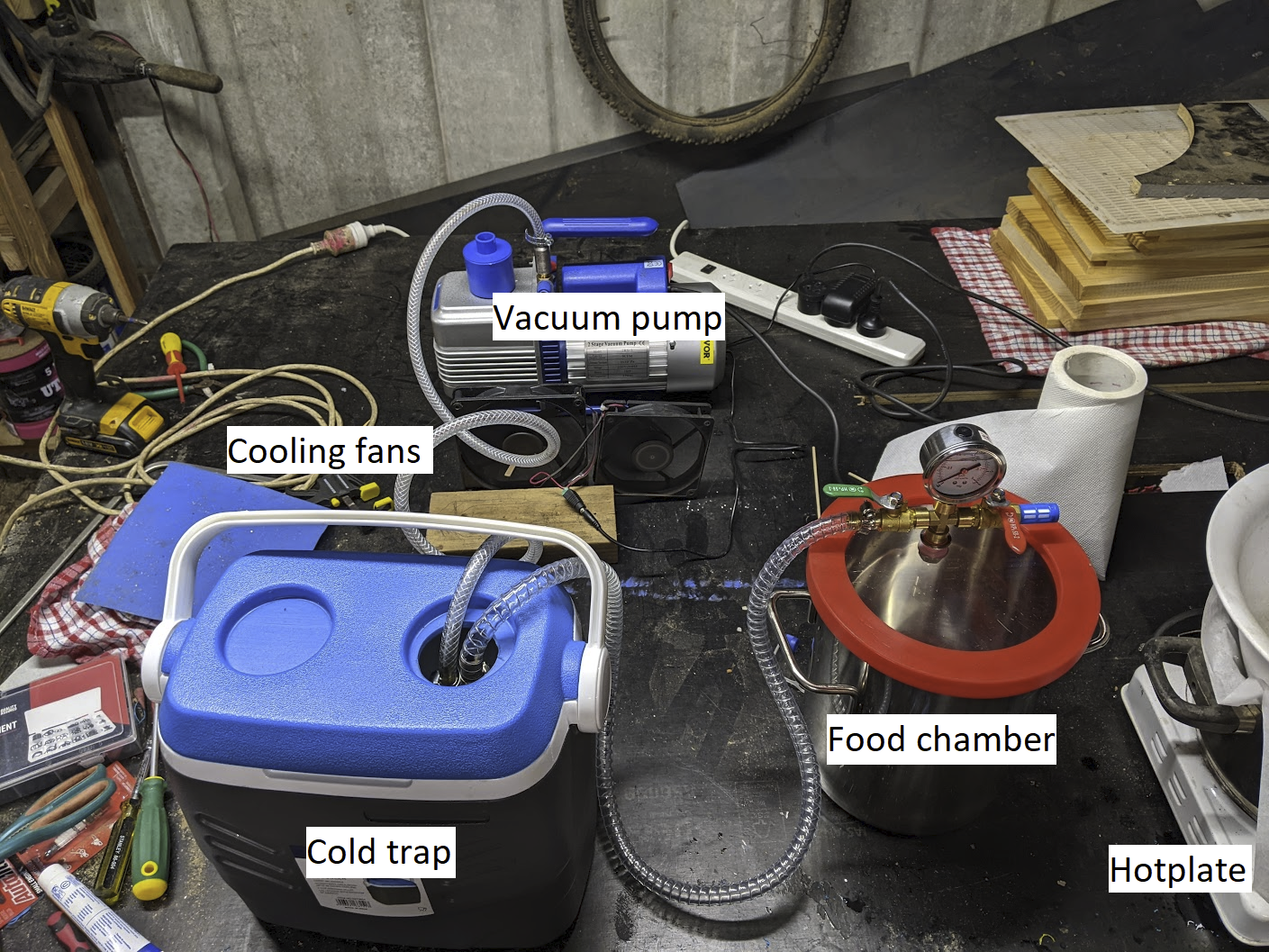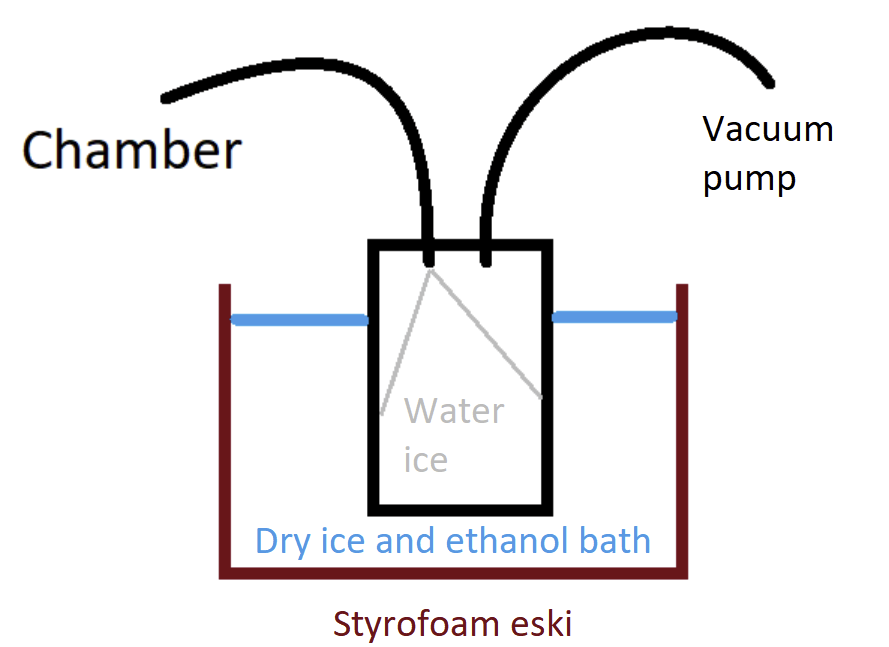Table of Contents
The Beginnings
The Plan
I would like to make vacuum freeze-dried food at home for fun.
Ben at Applied Science made it look easy.
The Shopping
- Strawberries,
- Raspberries,
- Mangoes,
- Kiwi fruit,
- Rainbow ice cream,
The Assembly
The vacuum pump pulls a vacuum of about about 50 mbar. The cold trap is a glass jar with a metal lid in an insulated box filled with dry ice and methylated spirits at about -75°C. The jar lid has two pipe fittings. The water ice in the food sublimates directly to a gas without disturbing the macro-scale structure of the food. I.E. The ice cream doesn't melt - it maintains its structure and becomes dry. The gaseous water travels along the tube and condenses in the cold trap.
Ideally the food should be at or below -35°C when it goes into the vacuum chamber. My freezer only goes to -20°C, so I have boxed and bagged portions of the food separately so I can superchill them in the cold trap before putting them into the food chamber. I have a temperature-controlled hotplate on standby to put some heat into the system to kick off the sublimation. I will pre-chill the food chamber too, so the ice cream doesn't start to melt as soon as it hits the stainless steel.
The pump gets hot during operation, about 65°C, so I set up a few PC case fans to help it shed heat. I may have issues with the narrow pipes. At low vacuum the molecules in the chambers and pipes change from behaving like a liquid to behaving more like little balls pinging around. Wider pipes mean it's easier for the molecules to ping their way out of the system and be caught in either the cold trap or vacuum pump.


